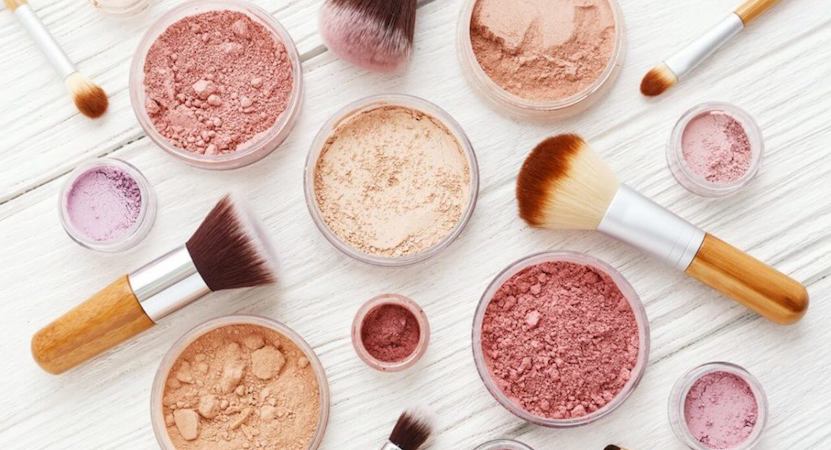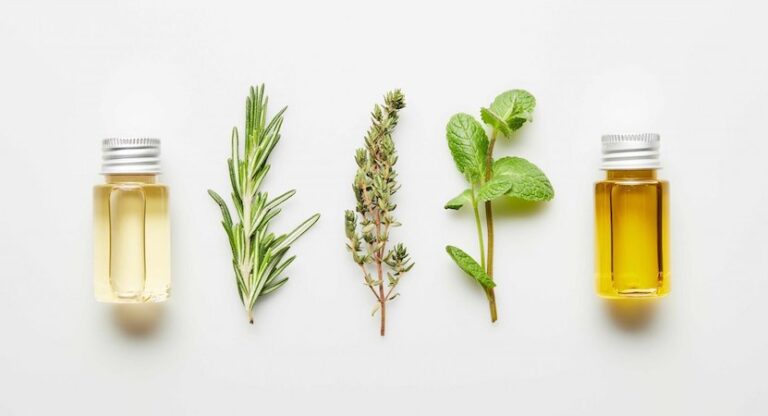If you are someone who is keenly aware of the latest news, trends, and fads surrounding the health and beauty sector, then you might have already heard about talc-free makeup. Controversies centered on talc have been going around for decades because of its alleged ties to cancer and asbestos contamination. But experts have not yet given their final verdict, as even the Food and Drug Administration (FDA) is still monitoring the potential public health issues that may arise because of talc in makeup.
While cosmetic giants like Chanel, Revlon, Avon, and L’Oreal are still trying to remove talc-based products from their product lines in fear of expensive lawsuits, smaller, lesser-known makeup brands have already enticed consumers to shift to talc-free makeup and avoid potential risks. If you are one of the consumers trying to make the shift, then read on because this article is for you.
This article aims to shed some light on the disputed safety of talc in makeup products, elaborate on some important information regarding talc, and give some recommendations on the current talc-free makeup products available in the market. In this specific sequence, this article will discuss:
- What is Talc? Definition, Properties, and Applications
- Talc in Makeup: Why Is It Used?
- Is Talc Safe?
- Health Controversies Associated with Talc: The Background and the Bottom Line
- Talc Free Makeup: Top Reasons to Use It
- Some of the Best Talc-Free Makeup and Where to Find It
- Which Cosmetic Brands Offer Talc-Free Makeup?
Before we get to the disputes and heated discussions on the safety of talc, let us talk first about the mineral in question. The first section of the article will define the four unique interpretations of the term ‘talc’, its applications, and the factors affecting its economic viability.
What is Talc? Definition, Properties, and Applications
Most people may recognize talc as the white powder more widely known as ‘talcum powder,’ but there are four distinct ways to interpret the term ‘talc’. Keep in mind that all four definitions are complementary despite being used in different contexts.
First, talc can mean a mineral compound. Although there are many types of talc as a mineral compound, it has a generalized formula — hydrous magnesium silicate. All types of talc are soft, chemically inert, pasty, and have water-absorbing properties. They also have a pearly luster, with colors that usually include translucent white, gray, green, and brown.
Second, as a rock, talc is known as soapstone. Talc makes up a large proportion of its mineral composition, but slight amounts of other minerals such as micas, chlorites, and carbonates also make up soapstone. Egyptians used soapstone, which owes its softness from talc, in carving scarab signets and amulets. Other civilizations also traded it for statues, stoves, and cooking pots in ancient times.
Third, talc is a powder used as a raw ingredient for industrial applications. We find it in plastics, ceramics, paint, roofing materials, paper, lubricants, and cosmetics. Without realizing it, we often encounter talc in our household items. It is an essential component of our daily lives.
Last, the average person can recognize talc as a cosmetic powder. This is the most widely known application of talc, despite it having the lowest consumption among talc products.
In the Mohs Hardness Scale, a scale intended to compare the resistance of a mineral to being scratched by ten reference materials, it ranks talc at the very bottom. This means it is one of the softest minerals ever recorded with a hardness of 1. Crushing and pulverizing talc is very easy. It also has a one-directional cleavage, so if subjected to blunt force, talc will easily break into a single plane or thin sheets. This characteristic of talc is the reason behind its softness and its greasy and soapy texture.
Talc is typically mined in open pit operations throughout the world. Its primary deposits are scattered across continents, each bearing unique talc deposits in terms of chemical and morphological properties because of the variety of ways the deposits can geologically form. Hence, no two talc deposits are the same. There are manufacturers who choose specific talc deposits for their cosmetic attributes, while others are useful for some other applications. Some of the top talc-producing countries include China, India, Brazil, and the United States.
Whether talc deposits are viable for commercial use depends on their color, brightness, pastiness, crystallinity, and non-talc minerals that accumulated during the formation of the talc deposits. The presence of these non-talc minerals that serve as impurities in pre-processed talc can bring out changes and adverse effects in the final product’s color, texture, and safety. That is why miners and manufacturers must take extreme care during its mining, processing, and characterization to comply with the quality requirements of talc’s commercial application.
Talc in Makeup: Why Is It Used?
The five most relevant properties of talc that make it helpful in its industrial application include its softness, pastiness, chemical-inertness, whiteness, and water-absorbing capability. These properties are also the reasons we commonly use talc in makeup. But is talc safe in makeup?
As mentioned, talc is a soft mineral. It breaks and pulverizes at a simple touch. Weak forces hold the molecules of talc together, giving it a delicate nature. Being soft and pasty allows powdered talc to lie and settle on the surface of the skin in stratified layers, covering unwanted blemishes, pigmentation, and uneven skin tone. Its translucent white characteristics downplay the thickness of the stratified layers.
Talc also influences the consistency and viscosity of makeup formulations. Water-based and solvent-based formulations all contain talc because its water-absorbing capacity can prevent caking and settling and improve the fluidity and covering power of makeup. Cosmetics can have a solid, semi-solid, and liquid matrix. To give an analogy, a wax-type lipstick and concealer stick have a solid matrix, blushes and eyeshadows are semi-solid, while creams have a liquid matrix. The key difference lies in their viscosities, with the matrices’ viscosity decreasing as you go from solid to liquid. But what about semi-solid matrices? Makeup with semi-solid matrices can be hard to differentiate from solid makeup, but the binding materials used in semi-solid makeup are not as vicious as those found in solid makeup. Therefore, if a makeup product is less compact and less viscous than a solid makeup but is more viscous than liquid makeup, then it has a semi-solid matrix. The percentage of talc vary in every matrix type.
The chemical-inertness of talc also allowed for its carrier applications in cosmetics. The most commonly used ingredients in cosmetics include water, fragrances, pigments, moisturizers, binders, thickeners, emulsifiers, and preservatives. Talc does not chemically react with any of these ingredients. It releases fragrances progressively and does not bring about bacterial growth, making it the perfect carrier. Some newly formulated makeup products also contain active ingredients — highly unstable and reactive substances that are known to give additional benefits to makeup products. Talc allows for their safe handling and incorporation in makeup products because it is unreactive to other substances.
Is Talc Safe?
Health Controversies Associated with Talc: The Background and the Bottom Line
The safety of talc has been in question since the 1970s with people wondering is talc bad for you? The controversies surrounding talc are anchored in its alleged contamination with asbestos. Asbestos is a known carcinogen. Chronic exposure to this cancer-causing compound will lead to mesothelioma, a cancer of the thin membrane linings in the chest and abdomen.
Colin Ruggiero, a health writer for the website Mesothelioma, explains that talc-based makeup products that contain asbestos are extremely dangerous, as asbestos exposure is the only known cause of mesothelioma cancer. “No amount of asbestos is considered safe, and unfortunately symptoms of asbestos exposure often takes decades to present themselves. It is recommended that consumers use talc-free makeup, as this will negate the possibility of being exposed to asbestos” says Ruggiero.
Here are two of the most popular cases that fueled the debate on the safety of talc and is talc in makeup safe.
The Health and Safety Claims for Talc
In the summer of 2018, a six-week trial concluded with Johnson & Johnson being ordered to pay $4.7 billion in punitive damages to 22 women who claimed that Johnson and Johnson’s products caused them to develop ovarian cancer. Six out of the twenty-two complainants died of ovarian cancer. The women’s lawyers accused Johnson & Johnson of failing to warn consumers of the health risks associated with their talc-based products when they know about the alleged asbestos contamination. They also presented studies that have concluded that the use of genital talc increases the risk of ovarian cancer among women.
Another case that strengthened the health claims surrounding talc is the recall of several children’s makeup products sold by retailers like Claire’s and Beauty Plus. The Food and Drug Administration (FDA) ordered the recall of Claire’s Jojo Siwa Makeup Set and Beauty Plus Global Contour Effects Palette 2 after testing positive for tremolite asbestos fibers.
How are Talc Products Contaminated with Asbestos?
Silicate minerals like talc and asbestos form in proximity with each other, which is why asbestos contamination of talc products is highly plausible. Makeup manufacturers do not purposely put asbestos in their talc-based products, but the improper selection of talc deposits sites and failing to screen and test batches of mined talc for asbestos content can lead to asbestos contamination in makeup products.
However, it is wrong to say that talc is inevitably associated with asbestos. The conditions for the geological formation of the two are not the same. Thus, asbestos in talc is not nature-driven. The appropriate selection of mines, attentive mining procedures, and contamination testing procedures confirming the absence of asbestos can act as safeguards against asbestos contamination.
How Often is Asbestos Found in Talc-Based Products?
The FDA conducted a survey on the occurrence of asbestos in talc-based products from 2009 to 2010. FDA requested cosmetic talc suppliers and talc-containing product manufacturers to send their samples for asbestos analysis. Among the nine suppliers they tapped, only four complied with the request for samples. The laboratory that conducted the analysis found no asbestos fibers in the thirty-eight samples of cosmetic-grade talc (raw material) or in the cosmetic products themselves.
However, the limited number of samples the FDA tested does not prove that most talc-containing products are likely to be free of asbestos contamination.
Last year, the FDA conducted the same survey — this time with a larger sample population of 52 talc-based products. Nine of the products from the two retailers mentioned earlier, Claire’s and Beauty Plus Global, tested positive for asbestos. The retailers voluntarily recalled their products from the market.
Safety of Talc Not Containing Asbestos
Now that we’ve confirmed that it is asbestos-contaminated talc that can cause cancer, how about the safety of non-contaminated talc? The working group of the International Agency for Research on Cancer (IARC) published their monograph on the issue in 2010. They stated that there is limited evidence for the carcinogenicity of talc not containing asbestos or asbestos fibers in experimental animals. The mixed results of studies examining the carcinogenicity of talc for humans prompted the IARC to declare that the use of genital talc as possibly carcinogenic. The group also found inadequate evidence for the carcinogenicity of inhaled asbestos-free talc.
The Bottom Line
Cosmetic-grade talc without asbestos is generally regarded as safe (GRAS), as long as consumers use it as intended. Experts highly discourage the perineal use of talc-based body powder, as the IARC ruled the practice as possibly carcinogenic.
However, talc contaminated with asbestos increases the risk of cancer. Asbestos is a confirmed carcinogen. Despite not being innately associated with talc, contamination can occur following a highly negligent mining process and manufacturing procedures. The FDA has already recalled some makeup products that tested positive for asbestos contamination.
For the reasons discussed above, any brand that uses talc could potentially be using talc that contains asbestos. Dr. Tracey Lambert, the owner of Skin Elegance, also reminds us that “you can’t rely on an ‘all-natural’ description to ensure that a makeup product is clean—especially mineral makeup.”
Talc Free Makeup: Top Reasons to Use It
As there is no available data that can say that most or all talc-based products are free of asbestos, we must always give potential health risks that can endanger the lives of consumers adequate thought and attention.
The possibility of facing expensive potential legal suits compelled cosmetic companies to veer away from talc. Major brands such as L’Oreal, Revlon, and Chanel are either exploring alternatives to talc or have totally excluded talc from the list of their product ingredients. Chanel started by removing talc from their loose face powder and stopped manufacturing one of their talc body powders, while Revlon removed talc from its body products. According to the cosmetic companies, efforts to find more alternatives are still ongoing, but they have not yet found a material that works as effectively as talc. Some alternatives being used are cornstarch, nylon-12, mica, rice powder, and other non-talc ingredients.
Consumers who remain concerned over the presence of asbestos in their makeup now have alternatives to choose from. Smaller, less-known brands are already one step ahead in offering talc-free makeup products to consumers who are knowledgeable about the controversies surrounding talc.
The next section of this article will discuss the best brands offering talc-free makeup, along with their specific products.
Some of the Best Talc-Free Makeup and Where to Find It
With online shopping, beauty vlogs, and endless product reviews, it is easy to find talc-free makeup on the internet. However, the enormous amount of information can easily overwhelm consumers who want to use talc-free makeup. So, this last part of the article aims to guide consumers in choosing some of the best beginner-friendly talc-free makeup available in the market.
Best Talc Free Face Powder and Best Talc Free Setting Powder
Face powders are generally used to remove excess oil and moisture from the face to give the skin a smoother and more flawless finish. More specialized face powders, like setting powders and finishing powders are now available. Setting powders are used to set makeup in place, making it last longer while finishing powders blur out imperfections in the skin after putting on makeup. It is now possible to find powder without talc.
There are three noteworthy brands that removed talc in the formulation of their face powders. First is Cover FX Perfect Setting Powder. This distinguished go-to setting powder is not only successful in its removal of talc in its formulation but also in the addition of healthy ingredients such as green tea leaf extracts and Vitamins E, C, and F. On top of that, it does not contain gluten, mineral oils, parabens, phthalates, and sulfates. The perfect setting powder indeed! This setting powder may only come with two shades (light and deep) but it’s perfect for all skin types.
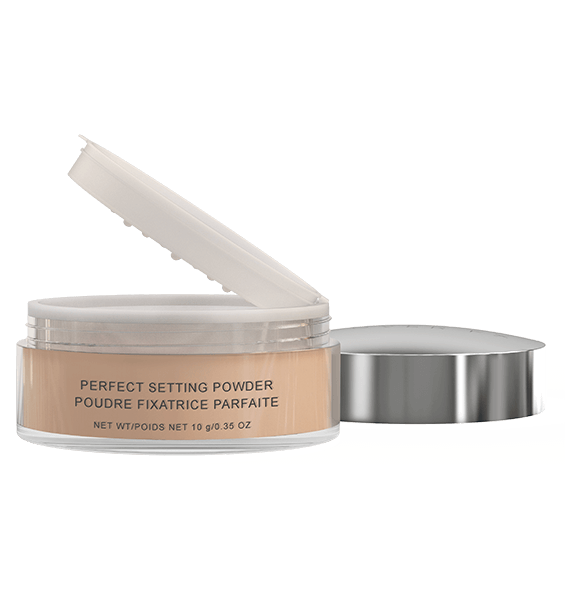
Next is Glossier’s Wowder Weightless Finishing and Setting Powder. Just like Cover FX, it replaced talc in its ingredients with mica and silica, silicate minerals that have similar properties with talc. By buffing the area of the face where you want less shine, you can control the level of dewiness in your face. This weightless finishing and setting powder will give your skin a matte finish without leaving a chalky feeling.

Last, there’s Lush Powdered Sunshine. This loose face powder also doubles as your sunscreen with SPF15. It replaces talc with a combination of cornflour and calamine powder, a blend of powders with zinc oxide as its primary ingredient. This particular ingredient protects the skin by reflecting harmful ultraviolet rays off the skin’s surface.
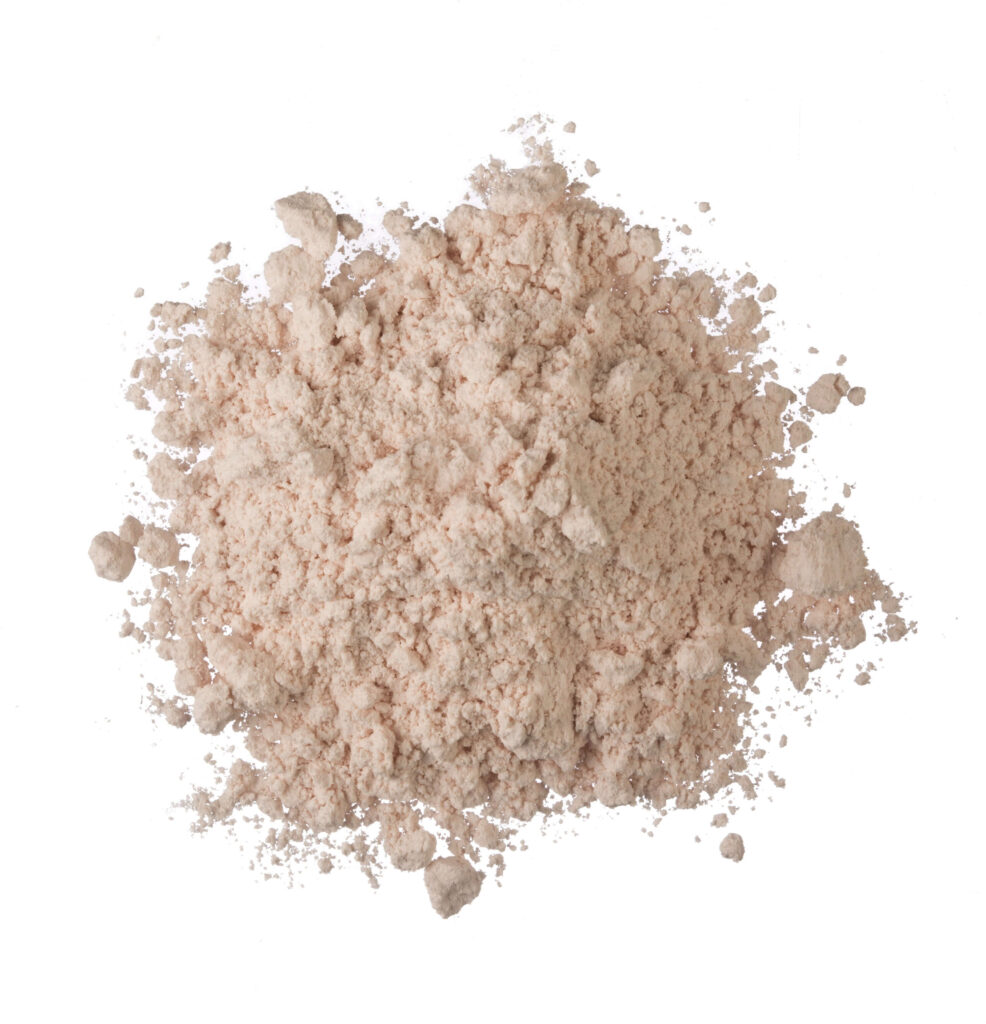
Best Talc Free Eyeshadow
Eyeshadows are used to draw attention to the eyes and make them look more attractive. Pressed eyeshadows, the most common type, typically use talc to carry the bright pigments along with some binders and preservatives. Without talc, the pigments may not be as vivid and may not last as long as talc-based eyeshadows. However, some brands are already successful in removing and replacing talc in their ingredient list. One of them is Smashbox’s Cover Shot Eye Shadow Palettes. In this product, it replaced talc with a combination of mica, silica, and nylon-12. With its six blendable mattes and shimmer colors and two double-sized based shades, you can create natural and smoky looks without worrying about the health risks of asbestos in your makeup!

Another remarkable brand and eyeshadow product that prioritizes skin sensitivity is Burt’s Bees 100% Natural Eye Shadow Palettes. Burt’s Bees formulated their eyeshadows without talc, fragrance, sulfates, parabens, petroleum, and phthalates. Instead, they made use of natural ingredients such as honey, bamboo, and essential vitamins. Their eyeshadow kits come in three complementary hues — one serves as a base, the other is a lightly pigmented matte color, and the last one is shimmery shadow.
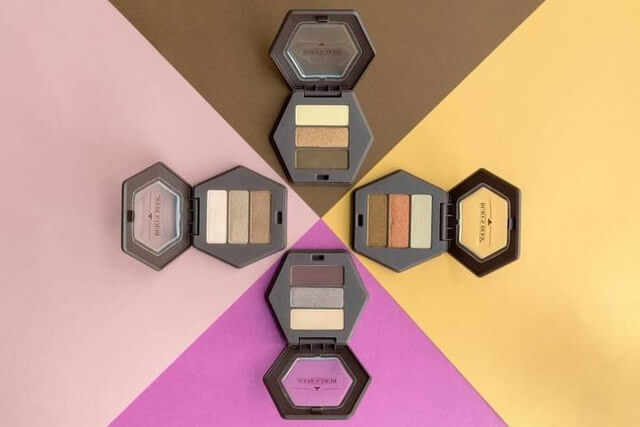
Best Talc Free Bronzer
If you want to add some pop of warmth and definition to your complexion, tanning is the way to go. However, the ultraviolet rays can also be harsh on your skin. Bronzers can give you that subtle sun-kissed glow without the potential side effects of tanning! Keeping your bronzers talc-free will provide you that additional safeguard to your wellbeing. TheBalm Take Home the Bronze can turn your skin into that wonderful tan without the undesirable orange undertones that sometimes appear when using other bronzer brands. Talc in this brand is replaced with the usual mica-silica combination to keep the product carcinogen-free.
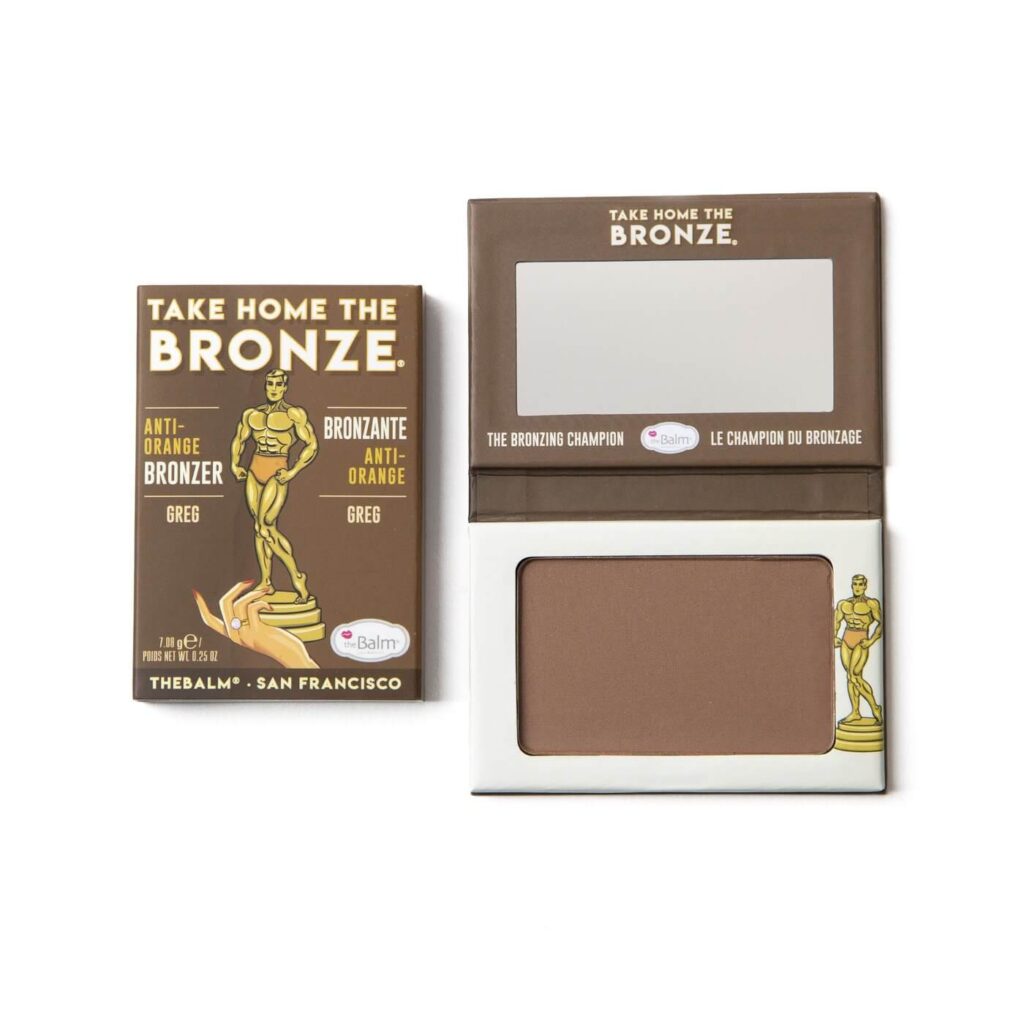
Highly pigmented bronzers have powders that are often opaque and the color may be hard to build and blend. But this is not the case at all for Bare Minerals’ Invisible Bronze Powder. With a multidimensional sheer that allows for a very healthy and natural color, this bronzer will surely make you glow. The brand deviated from the usual mica-silica combination and used cornstarch and mica as its talc substitute. They also made the product more compact by baking, so you would not have to worry about it breaking.

Blush
Not every one of us has been gifted with a natural flush in their face, prompting the need for a slightly rosy color in our cheeks. Good thing makeup blushes exist! Blushes are soft pigments, usually available in a variety of pink hues with peach and plum undertones, that save us from looking dull and pale. They can be in the form of powders or creams, but since we are discussing talc-free makeup products, we will focus on powder blushes.
The two brands that stood out for their talc-free blush powders were TheBalm Frat Boy Blush and Burt’s Bees Blush Makeup. Both products replaced talc with mica and silica. Makeup enthusiasts who reviewed TheBalm’s Frat Boy Blush pointed out its beautiful peachy pink shade with a balanced cool and warm undertones that suit any skin tone. It is a truly versatile product that can even be an eye shadow. Users can blend the powder effortlessly and the product will stay on the skin for long hours.

Just like other Burt’s Bees makeup products, their blush makeup prioritizes skin sensitivity above all. Instead of having potentially harmful chemicals like petrolatum, parabens, synthetic fragrances, phthalates, and sulfates, they incorporated natural oils and essences from bamboo, honey, jojoba, and soya. These 100% natural ingredients, along with Vitamin E, claim to nourish the skin and enhance its natural glow. Their makeup blush comes in five luminous shades that can last all day long.
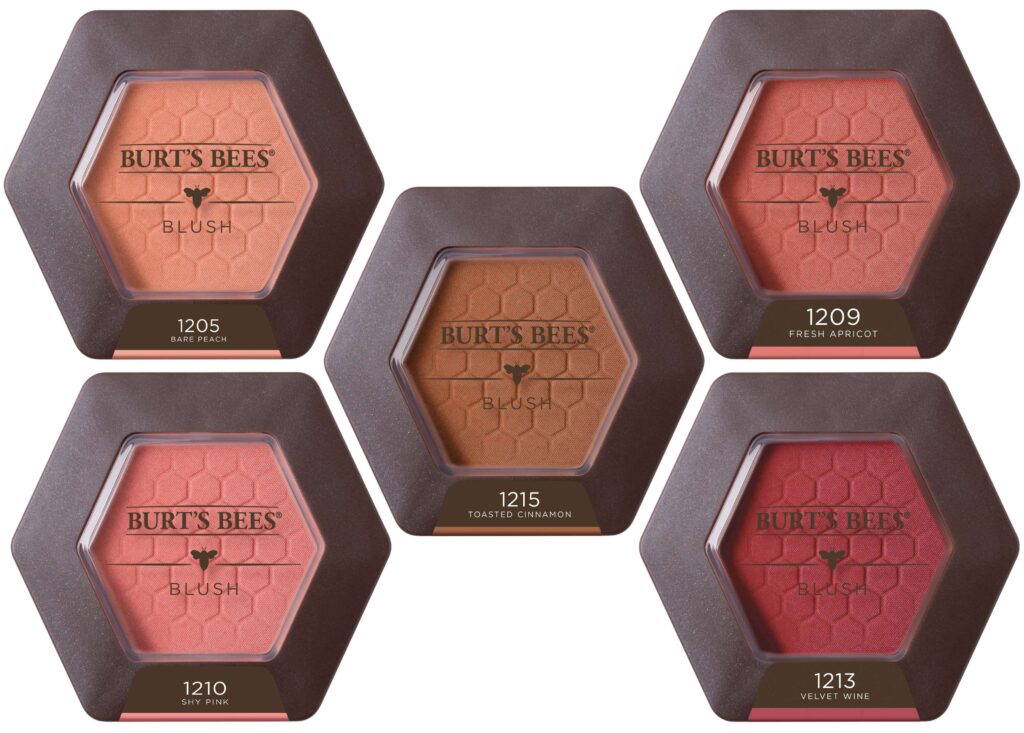
Which Cosmetic Brands Offer Talc-Free Makeup?
If shopping for individual products is too much of a hassle for you, you can also check these brands that can clean up your makeup routine. But be sure to still check the list of ingredients because the use of talc-free makeup is still in its early stages and there are little to no brands that have completely erased talc from their ingredients list.
Some of the more popular makeup brands that offer talc-free products include Smashbox, Burt’s Bees, TheBalm, Bare Minerals, IT Cosmetics, Juice Beauty, and Omiana.
Niamh Jordan from Kind Beauty Buys also recommends these 100% talc free and cruelty free brands of makeup: Milk Makeup, PÜR Cosmetics, and W3LL PEOPLE.
All of the above brands commonly have online shops where makeup enthusiasts can choose their talc-free products with ease.
As Kerrin Jackson from Utter Musings puts it, “with such a plentiful market for talc-free makeup and awareness of clean beauty gaining momentum, why not go talc free?”
Did You Enjoy This Article?
If you enjoyed this article, you might also like our articles discussing makeup such as Mica in Makeup, Top 15 Zero Waste Makeup and Sustainable Packaging Brands, and Skincare Fridges.

